-
Please take a moment and update your account profile. If you have an updated account profile with basic information on why you are on Air Warriors it will help other people respond to your posts. How do you update your profile you ask?
Go here:
Edit Account Details and Profile
You are using an out of date browser. It may not display this or other websites correctly.
You should upgrade or use an alternative browser.
You should upgrade or use an alternative browser.
Little known / experimental aircraft
- Thread starter Randy Daytona
- Start date
The point is to land and drop some dudes off not just fly around. If you can't do the landing thing when it matters then you have a flying boat that's bad at being a C-130.If a C130 can operate over oceans without needing to land in the water, then so can an amphibious C130 if the sea state is too high.
Until someone blows up your airfield or has it surveilled so you can't do anything sneaky. I'd imagine that being able to disperse the takeoffs and base of operations is part of the attraction to the idea.If truly amphibious no need to be tied to a tender. I am not prepared to propose a con ops, but I bet there are plenty of islands and conventional airports it could.operate from and have the range to get where it needs to go and splash in. Certainly no need for at sea tending. It is just a tactical airlifted with more landing options.
I think if you looked at the history of the larger flying boats that operated in port areas and lagoons, sea state was very rarely a problem. Sea state issues were usually a problem for smaller aircraft trying to make rescues in open ocean. To the extent seat state is a real issue, it isn't more so than any other weather/environment condition to be planned around. Combat Talons and helicopters have similar mission abort environmental concerns they work around.
I thought you meant they might get stuck with no where to land if sea states unexpectedly were bad. Of course they would depart on a mission requiring a water landing knowing they couldn't land because of sea state.The point is to land and drop some dudes off not just fly around. If you can't do the landing thing when it matters then you have a flying boat that's bad at being a C-130.
Outside of special ops, it would be a great SAR asset for both military and civilian. I did a few SAR flights in the P-3 where the best we could do was drop life rafts in the vicinity and hope the survivors could get to them while we looked for a ship (most like hours away at a minimum) to pick them up. USCG SAR C-130s and USAF SAR C-130s have the same problem although the USAF will put a PJ or 2 in the water to help.
Flashback to the famous Pan Am Clippers, the Boeing 314. Amazing that 32 years after the first flight at Kitty Hawk, these beautiful machines were crossing the Pacific.
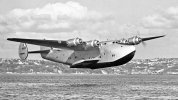
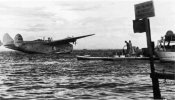
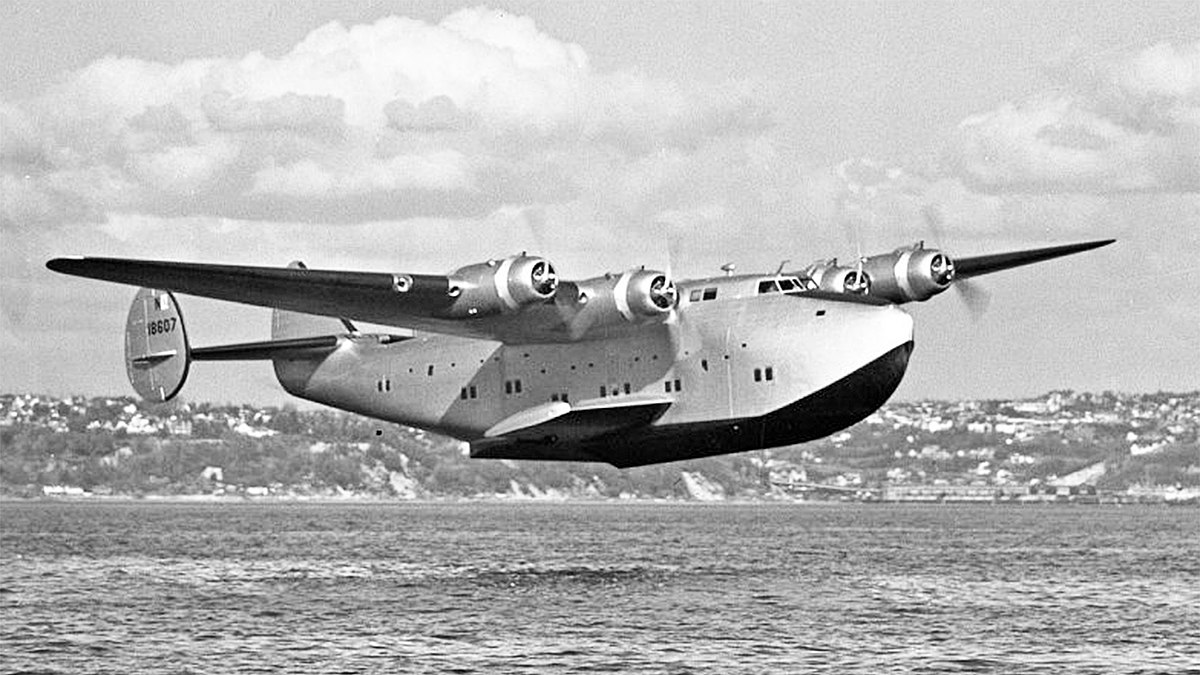
 en.m.wikipedia.org
en.m.wikipedia.org

(The Popular Mechanics article above has some good photos, in particular the navigator working hard to plot a course the old school way)



Boeing 314 Clipper - Wikipedia
Popular Mechanics
Popular Mechanics inspires, instructs and influences readers to help them master the modern world. Whether it’s practical DIY home-improvement tips, gadgets and digital technology, information on the newest cars or the latest breakthroughs in science -- PM is the ultimate guide to our high-tech...
books.google.com
(The Popular Mechanics article above has some good photos, in particular the navigator working hard to plot a course the old school way)
SAR seems to be what the countries that currently have large amphibs use them for. Although I'd be curious as to how often they can actually land. Sea State 3 is actually pretty restrictive and you can pretty easily find yourself outside of it in the open ocean. Depending on the sea state scale you use the wave heights are between 2-4' (ish, it varies) and wind speed is around 10kts. Which is pretty much every day in the open ocean. In the past large sea planes got around this by operating from protected atolls and anchorages like Midway. So if you're flying around in your amphib doing SAR I'd imagine in many cases you'd be restricted to dropping stuff or a landing that you don't takeoff after like the PBY that rescued the USS Indianapolis survivors.I thought you meant they might get stuck with no where to land if sea states unexpectedly were bad. Of course they would depart on a mission requiring a water landing knowing they couldn't land because of sea state.
Outside of special ops, it would be a great SAR asset for both military and civilian. I did a few SAR flights in the P-3 where the best we could do was drop life rafts in the vicinity and hope the survivors could get to them while we looked for a ship (most like hours away at a minimum) to pick them up. USCG SAR C-130s and USAF SAR C-130s have the same problem although the USAF will put a PJ or 2 in the water to help.
I'm just sniping at the JCIDS process, but wasn't the lack of a supersonic, hovering, stealthy jet fighter a capability gap back in WWII? Imagine how fast we could have whupped up on the Axis with a few of those.The way it's supposed to work is that if a capability gap is identified in planning...
Instant transporters are a capability gap too. Although would they make a copy and delete the original, or actually move the atoms?
Regarding the C-130 Seaplane variant, we should convince some billionaire to fund the development and then use it to get to his private island chain. We can benefit from his non-recurrent R&D.
And that's why AoAs take into account TRL.I'm just sniping at the JCIDS process, but wasn't the lack of a supersonic, hovering, stealthy jet fighter a capability gap back in WWII? Imagine how fast we could have whupped up on the Axis with a few of those.
Instant transporters are a capability gap too. Although would they make a copy and delete the original, or actually move the atoms?
Regarding the C-130 Seaplane variant, we should convince some billionaire to fund the development and then use it to get to his private island chain. We can benefit from his non-recurrent R&D.
For readers who don't speak acquisition what that means is that when a capability gap is identified by the user community theres a process to first see if the gap can be addressed by existing means such as providing new training to users or using an existing piece of gear differently or rewriting publications. If you can't address the gap via existing things then it's time to buy something new or upgrade what you have. Then you go look at the various ways you could buy something new and compare the various approaches. Part of this is assessing how mature various technologies are. So while a transporter would certainly solve a lot of capability gaps the fact that the technology doesn't exist, might never exist, and even if possible would take gazillions of dollars and tons of time to make it happen puts it in the realm of unachievable. There are plenty of examples of times that people thought that technologies were mature and they weren't, resulting in long development or projects being cancelled because the technology wasn't going to get there in time.
Those Clippers have a rich history. The kind of story that makes you say "wow," the ditching of Pan Am Flight 6 halfway across the Pacific Ocean.
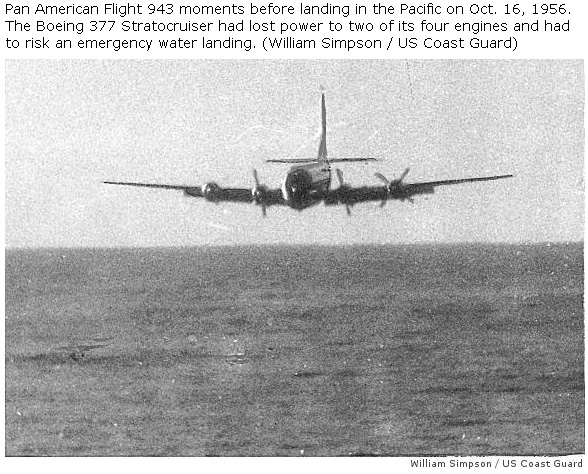
 en.wikipedia.org
en.wikipedia.org

Pan Am Flight 6 - Wikipedia
I feel like this idea died back in the early 60s with the P6M. I mean, who doesn't love a seaplane and maybe some seaplane tenders? But otherwise this just seems like AFSOC trying to figure out how to stay relevant in the Pacific in a way that doesn't involve boats.
This really strikes me as a solution in search of a problem and a command reaching for more relevance against a particular target.
I know Japan has a few amphibians with their US-2s. Are there any other countries that actively fly large amphibians?
Instead of shoveling money into a new program they only have to look to the US-2's as a solution if they want. They are very expensive and seem to be more of a make work project than anything else, but they are an off the shelf solution that fits the bill for this 'bright' idea and the Japanese are looking for buyers as they can only make so many for themselves.
Fun fact, the manufacturer of the US-2 is ShinMaywa which is nothing more than a 'reorganized' and renamed Kawanishi, manufacturer of the H6K 'Mavis' and H8K 'Emily' flying boats of WWII.
SAR seems to be what the countries that currently have large amphibs use them for. Although I'd be curious as to how often they can actually land. Sea State 3 is actually pretty restrictive and you can pretty easily find yourself outside of it in the open ocean. Depending on the sea state scale you use the wave heights are between 2-4' (ish, it varies) and wind speed is around 10kts. Which is pretty much every day in the open ocean. In the past large sea planes got around this by operating from protected atolls and anchorages like Midway. So if you're flying around in your amphib doing SAR I'd imagine in many cases you'd be restricted to dropping stuff or a landing that you don't takeoff after like the PBY that rescued the USS Indianapolis survivors.
As a SAR platform the modern flying boat is a pretty niche asset compared to helicopters and ships, and might not be worth the return on investment given how few rescues they could likely be used for.
Those Clippers have a rich history. The kind of story that makes you say "wow," the ditching of Pan Am Flight 6 halfway across the Pacific Ocean.

Pan Am Flight 6 - Wikipedia
en.wikipedia.org
After reading the wikipedia article about Pan Am Flight 6, it was the basis for the 1958 movie “Crash Landing” which was the last movie starring Nancy Davis, aka Mrs Ronald Reagan.
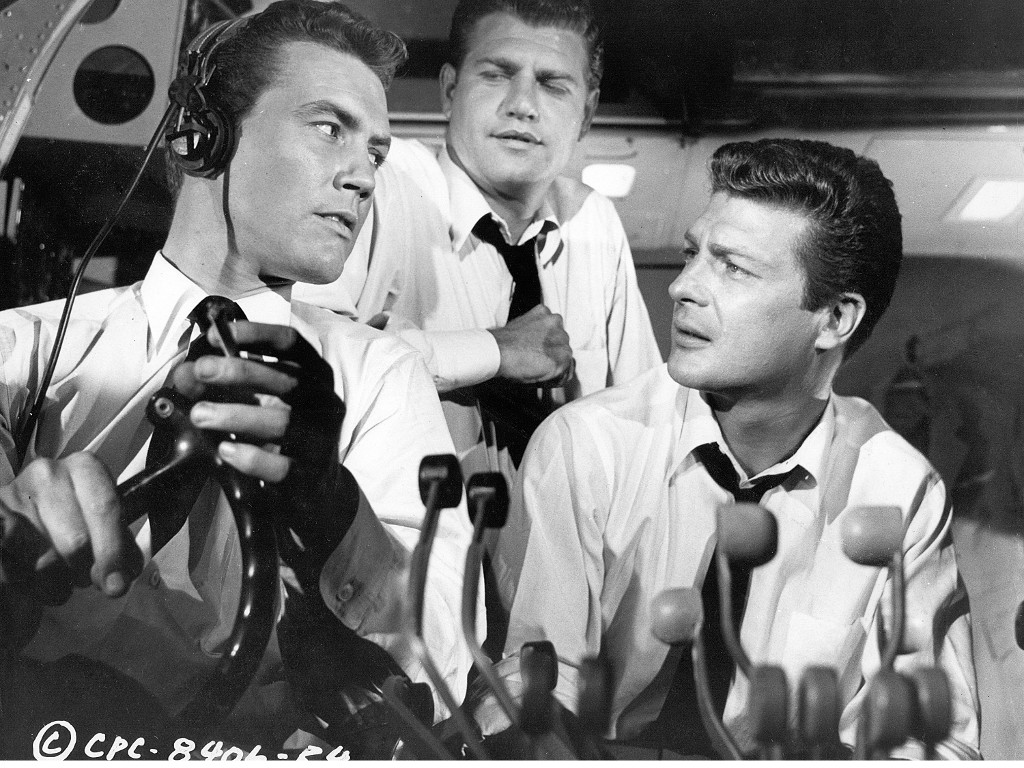
Crash Landing
The passengers and crew of a trans-Atlantic flight prepare for a crash landing at sea.
I also noted that the US-2 has a technical and corporate pedigree that goes back to Kawanishi and their flying boats from WWII. Which is worth noting that that level of corporate technical knowledge on the subject of large flying boats is long dead in the US so any new start big flying boat would take a fair amount of reinventing the wheel. Even if LM does have archival data from Martin that's only a piece of the puzzle as it's not the same as your grandma writing down her recipe for cookies.This really strikes me as a solution in search of a problem and a command reaching for more relevance against a particular target.
Instead of shoveling money into a new program they only have to look to the US-2's as a solution if they want. They are very expensive and seem to be more of a make work project than anything else, but they are an off the shelf solution that fits the bill for this 'bright' idea and the Japanese are looking for buyers as they can only make so many for themselves.
Fun fact, the manufacturer of the US-2 is ShinMaywa which is nothing more than a 'reorganized' and renamed Kawanishi, manufacturer of the H6K 'Mavis' and H8K 'Emily' flying boats of WWII.
As a SAR platform the modern flying boat is a pretty niche asset compared to helicopters and ships, and might not be worth the return on investment given how few rescues they could likely be used for.
Which I agree that if someone wanted a flying boat soon they'd be better off buying one from Japan. At the very least leasing some and demoing the concept to support the need and utility of a the idea.
that level of corporate technical knowledge on the subject of large flying boats is long dead in the US so any new start big flying boat would take a fair amount of reinventing the wheel. Even if LM does have archival data from Martin that's only a piece of the puzzle as it's not the same as your grandma writing down her recipe for cookies.

Good article from Air & Space on the Corsair.
How the Navy Tamed the “Killer Corsair”
A little piece of aluminum solved the WW2 fighter’s vicious behavior problem.

 www.airspacemag.com
www.airspacemag.com
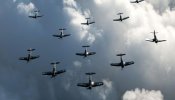
As many as 35 Corsairs still fly today, and 11 of them made it to the 2019 Thunder Over Michigan warbird show. Getting them all in one shot took the considerable talents of photographer Scott Slocum and photo ship pilot Bernie Vasquez. The Corsair legend is that it was too mean for the Navy so they gave it to the Marines. Here's the real story.
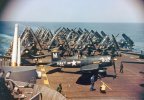
In 1951, Navy Carrier Air Group 2 embarked with a deckload of Corsairs on the USS Philippine Sea. Like some of its pilots, the Corsair earned fame in World War II and, seasoned, fought again in Korea
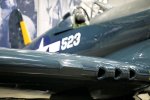
Outboard of the gun ports on the Corsair’s right wing, a little scrap of metal, carefully shaped and faired, spoiled lift just enough to make the wings stall simultaneously and make the Corsair less obstreperous.
How the Navy Tamed the “Killer Corsair”
A little piece of aluminum solved the WW2 fighter’s vicious behavior problem.

How the Navy Tamed the âKiller Corsairâ
A little piece of aluminum solved the WW2 fighter’s vicious behavior problem.

As many as 35 Corsairs still fly today, and 11 of them made it to the 2019 Thunder Over Michigan warbird show. Getting them all in one shot took the considerable talents of photographer Scott Slocum and photo ship pilot Bernie Vasquez. The Corsair legend is that it was too mean for the Navy so they gave it to the Marines. Here's the real story.

In 1951, Navy Carrier Air Group 2 embarked with a deckload of Corsairs on the USS Philippine Sea. Like some of its pilots, the Corsair earned fame in World War II and, seasoned, fought again in Korea

Outboard of the gun ports on the Corsair’s right wing, a little scrap of metal, carefully shaped and faired, spoiled lift just enough to make the wings stall simultaneously and make the Corsair less obstreperous.
